Lightning and Turbulence Probabilities to the northeast of Hawaii
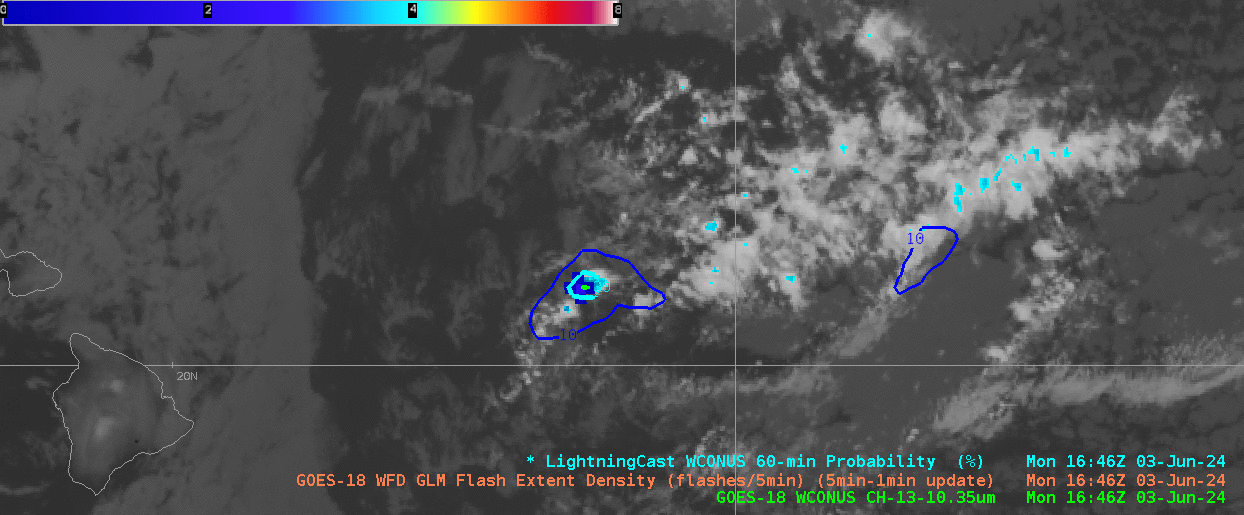
A period of high-based convection to the east and northeast of Hawaii was producing occasional lighting on 3 June 2024, as shown in the animation above. LightningCast Probabilities plotted show values around 50%, and lightning is occurring. Note that the Flash Extent Density colorbar has been modified to have a maximum value of only 8.
The convection is creating a signal in the CIMSS Turbulence product, shown below in imagery from this website. The animation below shows the contours of the probability of Moderate Or Greater (MOG) Turbulence to the northeast of Hawaii. The animation below also shows water vapor imagery as a greyscale, from which you can infer the upper-level low-pressure system over the Hawaiian Islands that is helping to force the thunderstorms.
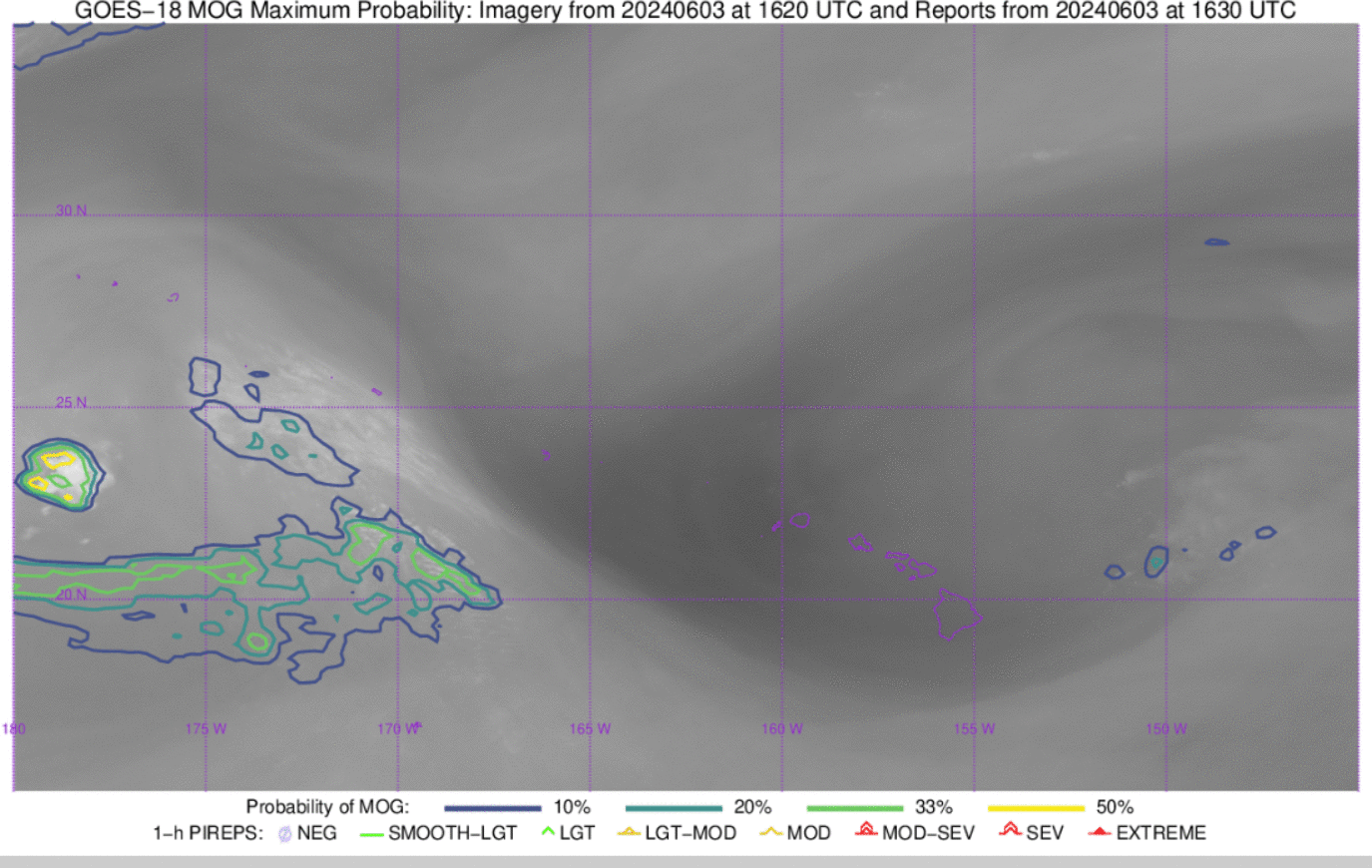
NOAA-20 overflew the region at around 1200 UTC on 3 June, and some NUCAPS soundings in the region are shown below. They uniformaly show a moist boundary layer capped by a stable layer. The mid-troposphere above that cap shows steep lapse rates and drying with height, that is, a convectively unstable atmosphere.
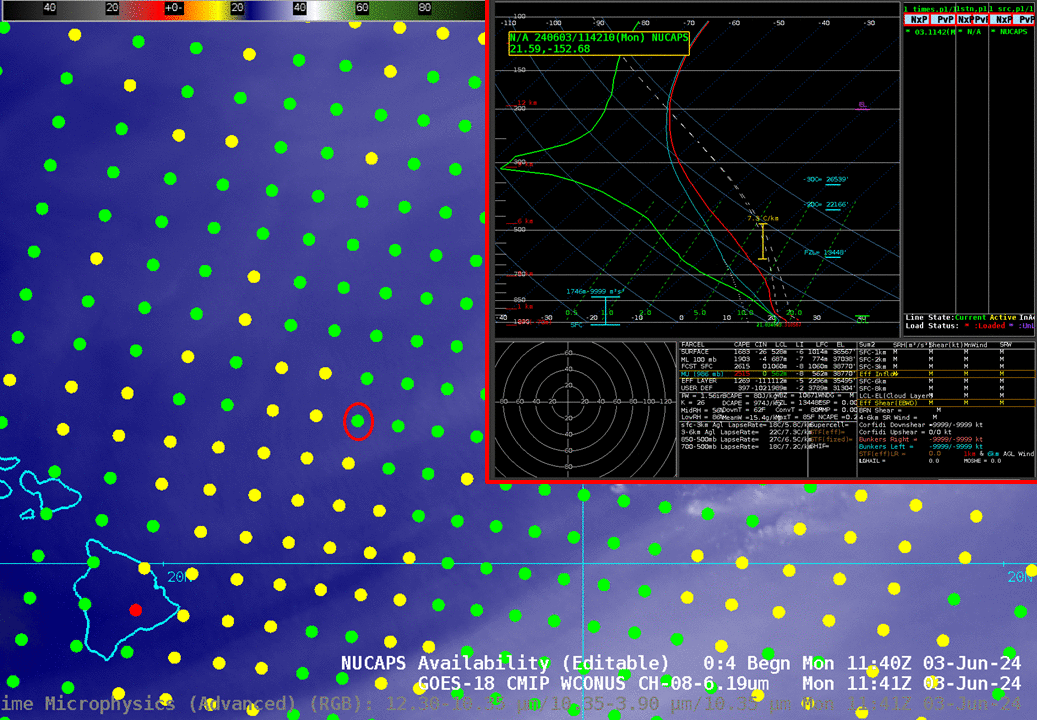
High-based convection again developed between 0600 and 1200 UTC on 4 May 2024. The Hilo Sounding, below (source), showed a capped moist boundary layer with an unstable atmosphere above 700 mb.
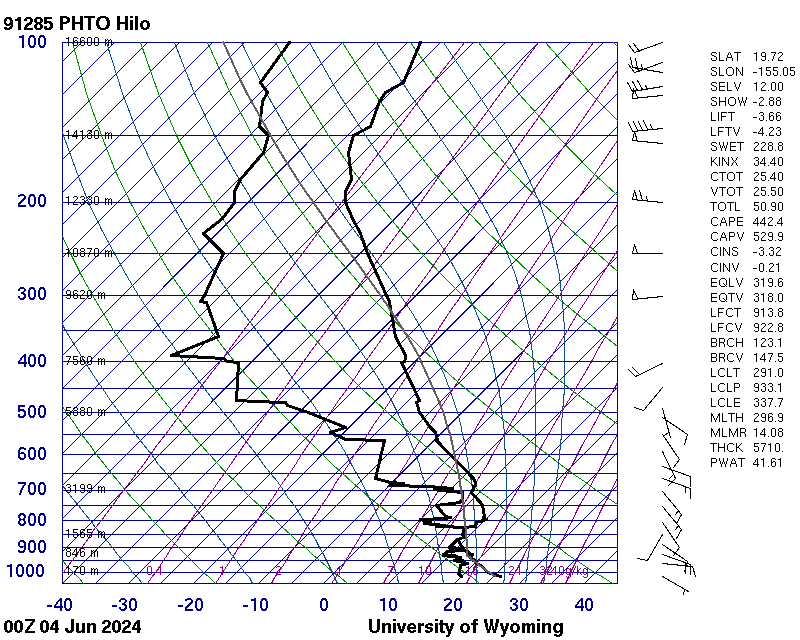
NOAA-21 overflew the islands just before 0000 UTC as shown below. The NUCAPS soundings along the north shore of the big island of Hawai’i, are shown below. The profile north of 20 N is from 234344 UTC, the one south of 20 N is from 234312 UTC. The structures of the smooth NUCAPS profiles are similar to those of the Hilo rawinsonde shown above.
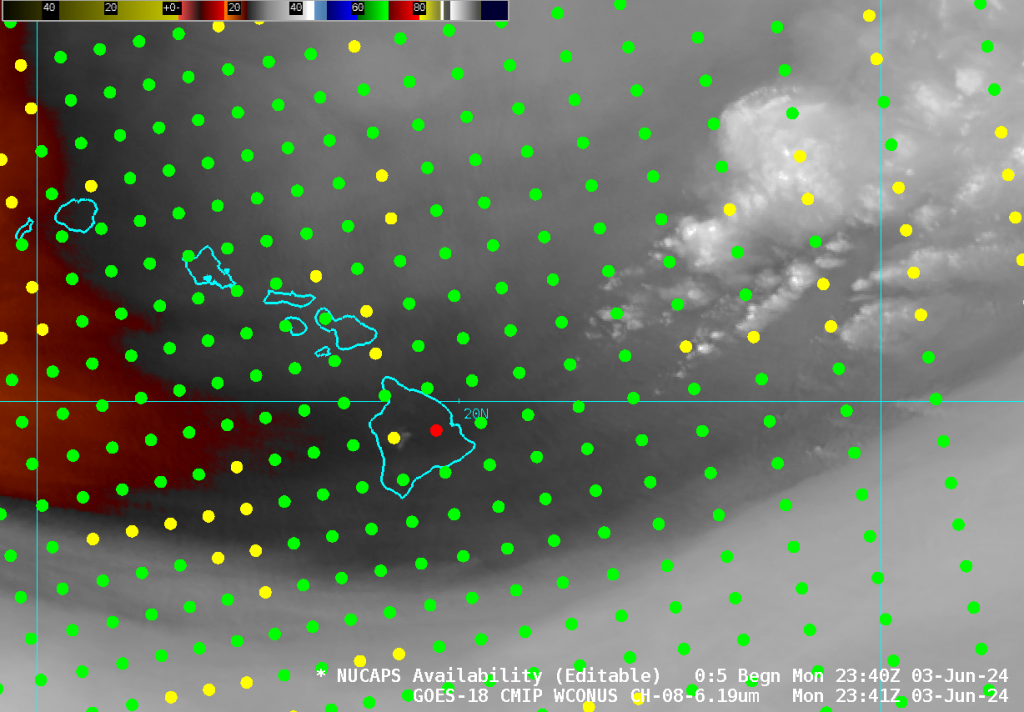
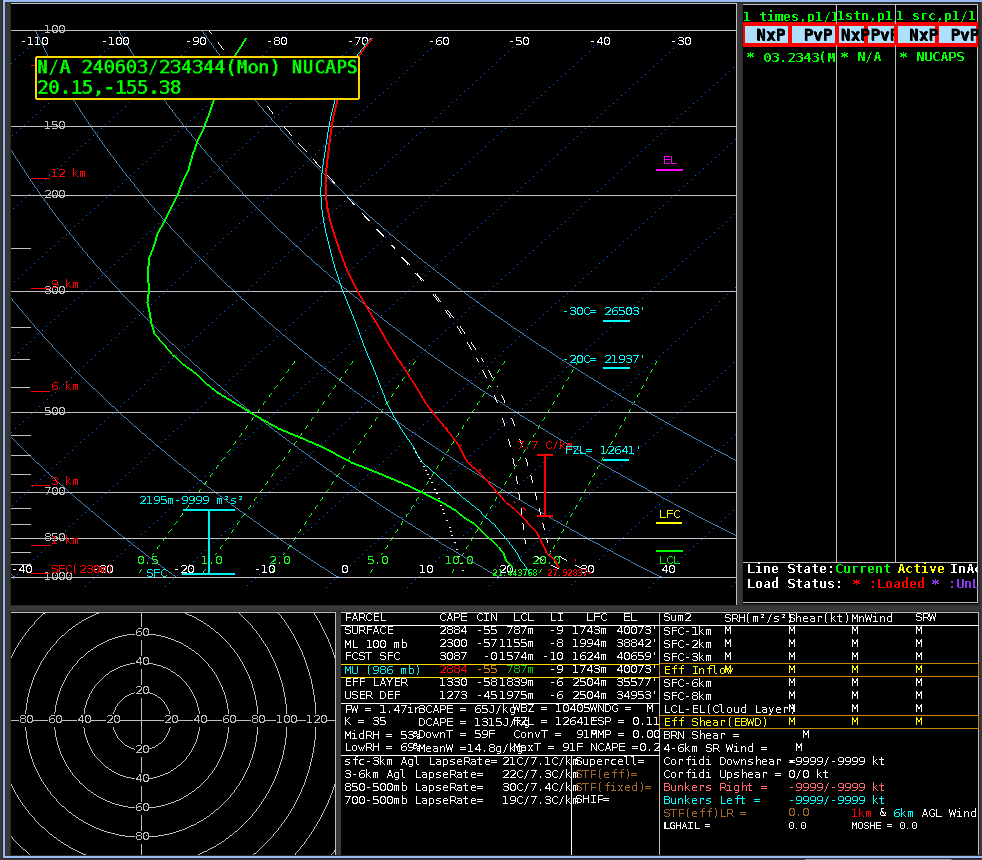
The animation below shows the LightningCast output (from this website) for the elevated convection between 0600 and 0800 UTC on 4 June 2024.
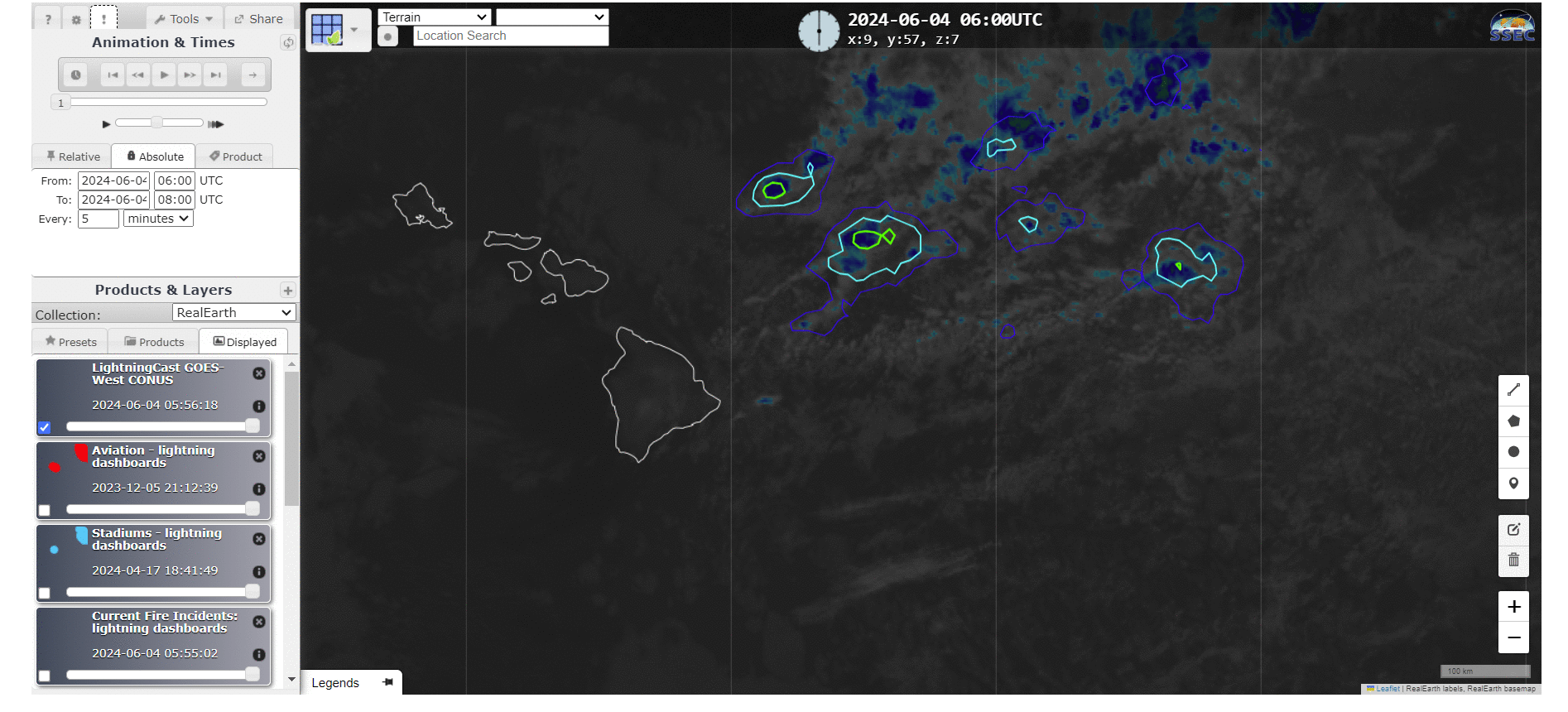
Thanks to Robert Ballard, Science and Operations Officer (SOO) at WFO Honolulu for alerting us to this event. He notes the similarity to an event back in the year 2000, mentioned in this AFD. High-based thunderstorms such as these are rare in the tropics. They are decoupled from the tradewind cumulus: the thunderstorms are moving northward as the lower clouds move towards the west.

